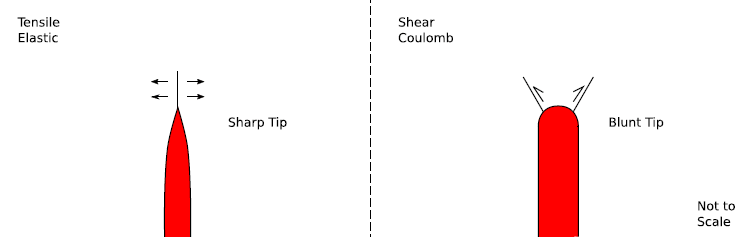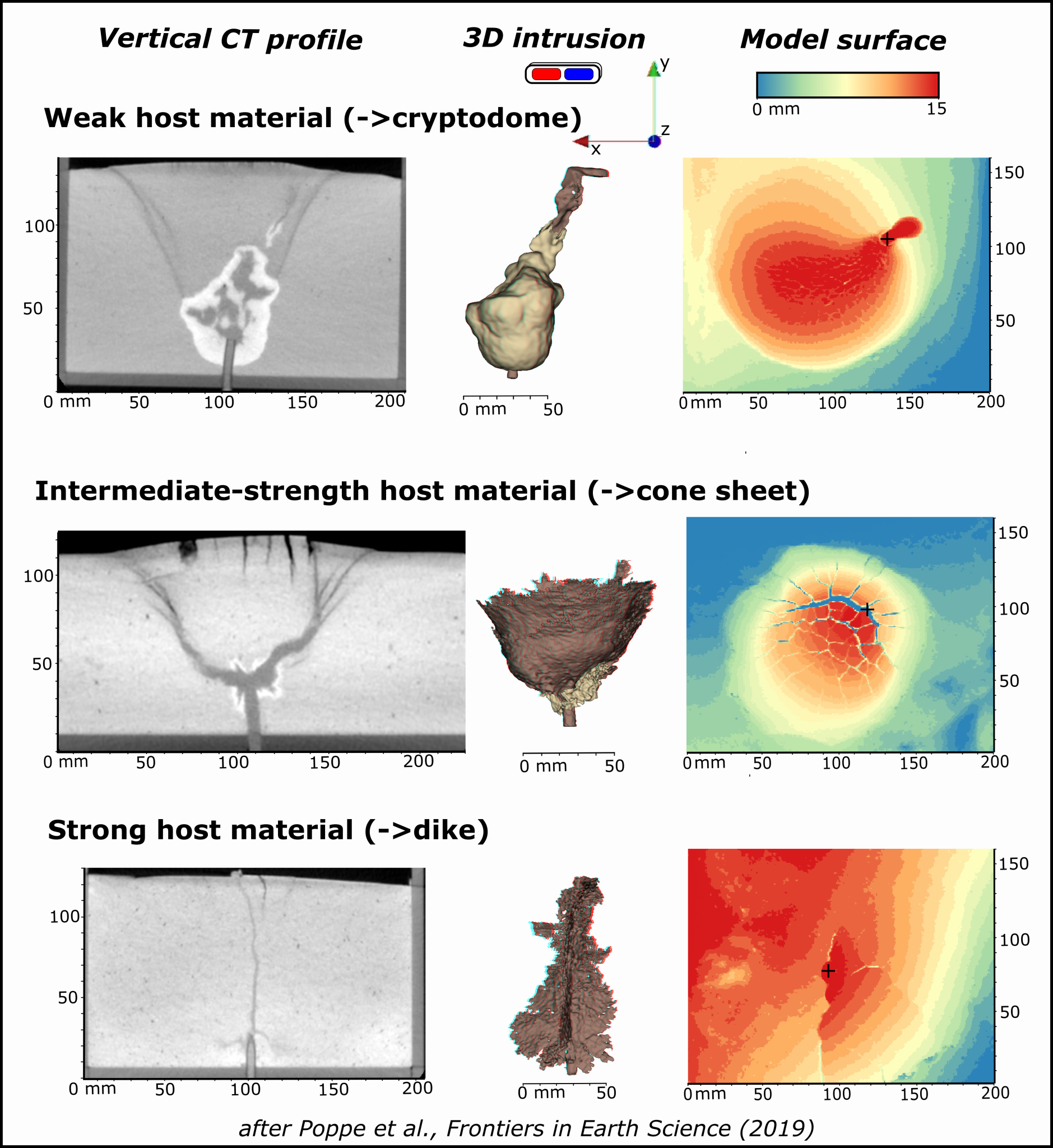
Sam Poppe – Vrije Universiteit Brussel
Despite the recent leaps forward in improving the temporal and spatial resolutions of volcano monitoring data, it still remains impossible to directly observe magma intrusion processes in a volcano’s plumbing system. As a result, numerical models are used as eruption forecasting tools, which are based on a series of assumptions, some more evidenced than the others. One of those assumptions concerns the mechanics of the deformation of the intruded host rocks: some modelers assume tensile linear elastic fracturing around a hydrofracture, while others assume dominantly shear Coulomb plastic deformation around a viscous indenter (see Figure 1).

A complementary approach to numerical models is analogue laboratory models. These study volcanic deformation processes in an increasingly quantitative manner and therefore necessitate innovative developments in image analysis. Whereas gelatine, the standard elastic host rock analogue, is transparent, plastic deformation in granular crustal analogues that are opaque is usually monitored at the model surface or at the model side-wall. The limitation of this method is that only the final deformation state is recorded in model cross-sections. As a result, our understanding of magma propagation modes and the associated inelastic host rock deformation from such models in 4D (3D + time) is limited.
To overcome this issue, Sam Poppe and his PhD supervisor team developed a methodology for dynamically imaging fluid intrusions (golden syrup) in granular crustal analogues (sand-and-plaster) by using medical wide beam X-ray Computed Tomography (CT) at the University Hospital in Brussels (UZ Brussel). The high scanning speed (1 second) and wide detector (16 cm) of this cutting-edge CT set-up allows acquisition of a 3D image time series during fluid intrusion, which is impossible with standard- or micro-CT. Consequently, the geometric development of the syrup body as well as that of subsurface fractures and surface deformation in the granular analogue can simultaneously be visualized. Digital Volume Correlation (DVC) then allows calculation of incremental and cumulative 3D deformation in the granular host material over time.
Recently, Sam and his colleagues published the results of his models and the capabilities of this new methodology in a paper: “An Inside Perspective on Magma Intrusion: Quantifying 3D Displacement and Strain in Laboratory Experiments by Dynamic X-Ray Computed Tomography” (https://doi.org/10.3389/feart.2019.00062), including three supplementary videos of the CT imagery. The deformation, i.e. 3D displacement and strain, observed in weak analogue host material around thick fingers and spherical syrup intrusions, i.e. cryptodomes, showed that distributed strain and mixed-mode (opening + shear) dominates. Around thin sheet intrusions, i.e. dikes, in stronger host material, strain is localised and opening-mode fractures dominate. Between these two end-members, a continuum of cup shape, cone sheet and inclined sheet intrusion geometries forms (see Figure 2).

The authors showed that the combination of X-ray CT and DVC allows for a deeper understanding of magma propagation processes and the deformation it induces in the host rock it is injected in. Now that the methodology is established, more detailed explorations of the mechanics of the deformation processes around differently shaped intrusions in host materials of different strengths are ongoing. A study on the mechanical behavior of sand-plaster analogues is in preparation to be published as well. This new modeling approach will as such provide a novel basis for interpreting geological, geodetic and geophysical data related to volcanic deformation.
Sam Poppe is an FWO PhD student at Vrije Universiteit Brussel, Belgium (sam.poppe@vub.be). He mainly focuses on volcano-structural deformation (caldera collapse, gravitational deformation, magma intrusion), through a combination of laboratory analogue modeling and structural field work, often on African volcanoes (DRC, Rwanda, Comores), and sporadically geochemical analysis. His current PhD focuses on crustal rock deformation induced by propagating magma. He has also worked on volcanic hazard assessment by using physical volcanology, radiocarbon dating, morphometry and numerical lava flow simulations. Sam is a #scicomm passionate via Twitter (@SamPVolcano) and other channels, an effort for which he was awarded by the Royal Flemish Academy of Belgium for Science in 2018. Find his papers via http://we.vub.ac.be/nl/sam-poppe or Google Scholar.

Leave a Reply